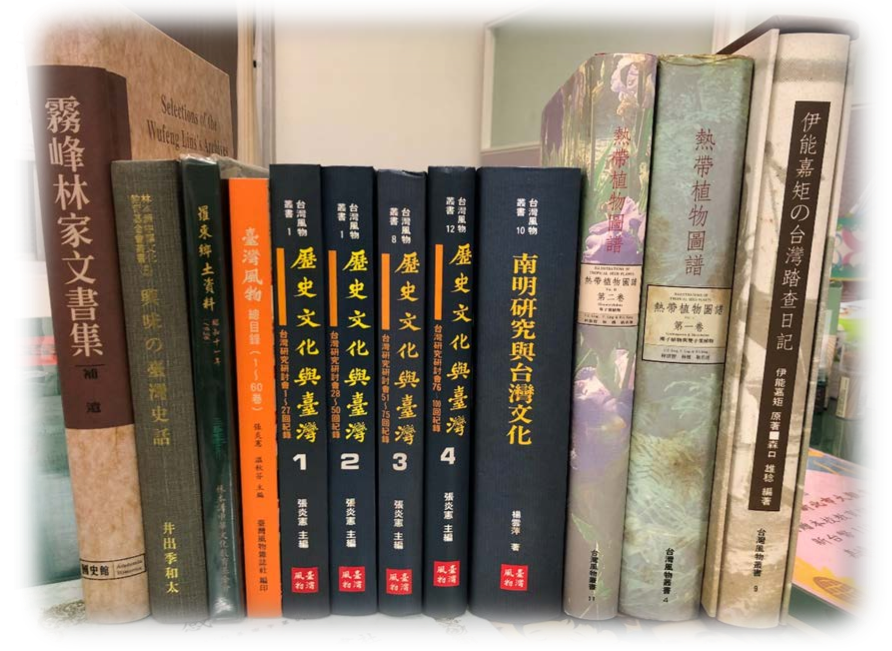
族群與宜蘭歷史
Ethnicity and the history of Ilan
詹素娟/Su-chuan Chan
(中央研究院臺灣史研究所籌備處助理研究員)
(Assistant Research Fellow, Preparatory Office, Institute of Taiwan History, Academia Sinica)
2001-05-07  Historical photograph of anAtayal man, left, and woman.
Historical photograph of anAtayal man, left, and woman.
宜蘭是族群文化多元而複雜的移民社會。自史前時代開始,蘭陽平原就有人類活動的遺跡。隨後噶瑪蘭人、泰雅族、平埔族與漢人陸續遷入,展開水與土地的生存空間之爭。蘭陽社會的族群史可做為台灣族群歷史的縮影,如今,蘭陽地區雖然以漢人文化為主體,但90年代以後,社會大眾興起一股本土文化的風潮,宜蘭人紛紛投入追尋自己祖先的根。於是,我們得以有機會一睹蘭陽舞台上的另一場族群文化盛宴,從中體會保存自身母語文化的重要性。本週特別邀請中央研究院臺灣史研究所籌備處助理研究員詹素娟與我們細說宜蘭的族群開拓史。
Ilan is an ethno-culturally diverse andcomplex immigrant society. Starting beforehistorical records began, people havelived on the Lanyang Plain and left behindrelics of their lives. Later on, theKavalan people, the Atayal tribe, Pingputribes and Han Chinese have moved intothis land, one after the other, developedits water resources and land and foughtfor survival space. Lanyang society’sethnic history can serve as an epitome forTaiwan’s ethnic history. Nowadays, althoughthe Lanyang region is principally Han inits culture, since the 1990s, following theupsurge of a local cultural renaissance inpopular society, the people of Ilan havebeen involved in a search for the roots oftheir ancestors. As a result, we have theopportunity to sample a differentethno-cultural extravaganza on the Lanyangstage, and in the process, appreciate theimportance of preserving one’s own mothertongue and culture. This week, we haveinvited Su-chuan Chan, research fellow inthe Preparatory Office of the Institute ofTaiwan History at Academia Sinica, torecount for us the ethnic history ofdevelopment in Ilan.
歷史上的宜蘭,以蘭陽平原為主要活動舞臺。雖然蘭陽平原面積只有330 平方公里,卻由於擁有複雜的族群、豐富多元的文化,而在歷史過程中交織、糾葛出一幕幕動人心弦的悲喜劇。
340 years ago, on April 30, 1661, Koxingalead armed Historically, the Lanyang Planhas been center stage for life in Ilan.Although it covers an area of only 330 squarekilometers, thanks to its complex ethnic mixand richly diverse cultures, an endlessinterwoven tragicomedy emerges from itshistory which touches the heart.
多族群文化背景
從史前時代以來,蘭陽平原就有史前人類活動居住,他們是噶瑪蘭人,主要分佈在低濕沼地,依傍溪流而居、形成數十個村落。雪山、中央兩大山脈的廣大山區則是泰雅族群的活動天地;而十九世紀初才從西部遷移進來的西部平埔族群,也和噶瑪蘭人發生密切的關係。至於嘉慶元(1796)年開始以集團方式入墾的漢人,因人數眾多,不但對本地所有南島民族造成重大衝擊,並且快速成為蘭陽平原的主要人群。
A backdrop of many different cultures
The Lanyang Plan has been inhabited byhumans since prehistoric times. The Kavalanpeople were spread mostly around low, marshyland, and they established dozens of villagesclose to the flowing streams. The widemountain region spanned by Hsuehshan andCentral Mountain Ranges was home to theAtayal tribe. It wasn’t until the beginningof the nineteenth century that the Pingputribes from the western region moved intothe area, and forged close relations with theKavalan people. As for the Han Chinese whostarted to come in and cultivate the land ingroups from 1796, their numbers were sonumerous that they not only created a majorimpact on the Austronesian people who inhabitedthe land, they also rapidly became the majorethnic group on the Lanyang Plain.
蘭陽溪的隔絕性與「溪北」、「溪南」的開墾
蘭陽溪是蘭陽平原裡最長、最大的河流。流入平原後,在扇端形成網狀流路。充滿礫石的廣闊溪灘,水道游移不定,下游則水路分歧易變,水淺流急;在近代堤防修築之前,蘭陽溪可說毫無通航與使用上的便利性。因此,蘭陽溪將平原切割為二:形成「溪北」、「溪南」兩個歷史發展步調不一的地區。
The isolated nature of the Lanyang River,and the development of the areas to itsnorth and south
The Lanyang River is the longest, largestriver on the Lanyang Plain. After it flowsinto the plain, at its fanned-out endsforms a network of waterways. The broadriver is full of gravel, and the waterfollows an unfixed path. Downstream, theriver splits up into variable numbers ofbranches, where the water is shallow andruns fast; in recent times, before theembankments were built, the Lanyang Rivercould be said to completely unnavigable byboat, and quite unusable. Consequently, theLanyang River divides the plain into two:creating the “north of the river” and “southof the river” areas which have had differenthistorical developments.
十九世紀初,以吳沙家族為首的漳、泉、粵三籍漢人,運用「結首制」組成拓墾集團,大舉進入蘭陽平原。由於組織嚴謹,開墾工作進行迅速,不過十五年光景(嘉慶 1-15年,1796-1810),就已開墾蘭陽溪北的土地;而從噶瑪蘭廳的設置到嘉慶、道光兩朝更替的十年間,溪南草埔也很快轉變為水田稻作的農地。道光至光緒年間(1821-1895),漢人與平埔族群共組開墾集團,深入蘭陽溪上游,開墾今三星鄉及一部份員山鄉。經由此一長達百年的入墾過程,蘭陽平原遂轉變成以漢人為主的街莊世界。
At the beginning of the nineteenth century, HanChinese from three different areas in China –Guangdong, and Quanzhou and Zhangjiang, both inFujian — and led by the Wu Sha Clan, formed armedgroups to develop the land, and entered the LanyangPlain in great numbers. Because they were so wellorganized, development work proceeded rapidly, andin under 50 years (the first 15 years of the JiaqingReign were 1796-1810), the Lanyang Plain north ofthe river had already been fully developed. Duringthe 10 years from the establishment of the KavalanOffice to the Daoguang Reign, the grasslands to thesouth of the river also rapidly became paddy fieldsfor agriculture. From 1821 to 1895, Han Chinese andPingpu people worked together in land-developmentteams, penetrating far upstream the Lanyang River,developing Chin San Hsing Township and part of YuenShan Township. Having been through this century ofdevelopment, the Lanyang Plan had become a world ofstreets and villages, populated mainly by Han Chinese.

Han Chinese consecrated temple.
清朝政府的難題
噶瑪蘭初入版圖,清廷必須處理的族群問題有四:一是如何阻隔中央山地的泰雅族人,使其不得逸入平原墾區,造成治安的困擾?二是在漢人自行入墾、國家不及防範的前提下,如何彌補溪北噶瑪蘭村社已經形成的土地流失問題;及如何防止溪南噶瑪蘭村社重蹈覆轍,以保留適量土地讓他們維持基本生計?三是如何在兼顧噶瑪蘭人土地所有與生計的同時,也能妥善控制漢人的開墾秩序,並進行土地的分配?最後,則是如何安排西部平埔族群的角色與生計?
The difficulties of the Qing government
When the Kavalan people were first brought intothe domain of the Qing government, there werefour ethnic problems that Qing court had todeal with: one was how to cut off the Atayalpeople from the central mountain regions, sothat they could not access the developed landof the plain, and create problems with publicorder. Seeing that Han Chinese had come hereof their own accord to cultivate the land,before the nation could take any countermeasures,the second problem was how to make up for theproblem of loss of land which had already beencreated in the Kavalan villages to the north ofthe river; and how to prevent the Kavalanvillages south of the river from making thesame mistakes, and preserving a suitable amountof land to allow them to keep on making a basicliving. The third problem was how tosimultaneously pay attention to the land ownedby Kavalan people, and the livelihoods theymade, while keeping proper controls so thatHan Chinese developed the land in an orderlyfashion, while carrying out land allocation.Finally, how was the Qing to make arrangementsfor the roles and livelihood of the westernPingpu tribes?
針對泰雅人,清廷與民間沿山腳連續設置二十處隘寮,形成一道防線,以遏止山地住民出草。這些隘寮,不僅形成武力防堵線,也反映山地、平原住民的族群邊界。至於噶瑪蘭人的土地與生計、漢人的入墾及土地需求,事實上是一體兩面、無法分開對待或個別處理的問題;清廷採用一種特別的土地制度「加留」制,以同時解決雙方的需求。西部平埔族,因其外來者的特殊角色,不能納入官府對漢民的資源分配範圍,也未能享有噶瑪蘭的土地福利,而變成蘭陽平原上處境尷尬的真正少數。
Focusing on the Atayal people, the Qing courtand local people set up a chain of 20 huts inthe passes along the foot of the mountains,forming a line of defense to prevent the peoplewho lived in the mountains from coming out intothe plain for headhunting. These mountain hutsnot only formed an armed line of defense, theyalso reflected the border between the inhabitantsof the mountains and the inhabitants of theplain. As for the land and livelihoods of theKavalan people, the land development and landneeds of the Han Chinese, these were actuallytwo sides of the same coin, and it wasimpossible to separate either and treat it asan individual question; the Qing court used aspecial land system which they called “ke-lau,”and solved the requirements of both sides at thesame time. The western Pingpu tribes, because oftheir distinctive role as outsiders, could notbe absorbed into the range of those Han Chinesewho were allocated resources by governmentoffices, and they did not yet enjoy the landbenefits which the Kavalan people had, butinstead they became a true minority withambiguous status on the Lanyang Plain.
漢人與噶瑪蘭人的生存空間競爭
漢人的農業拓墾,目的在獲取土地、並將「荒埔」轉變成適於水田稻作的農地。因此,漢人不但在拓墾過程中,由領導者分配土地;清廷也想盡辦法,替漢人製造租佃土地的機會。清代宜蘭開築多條埤圳,灌溉田園,可耕地因此快速水田化。然而,漢人改造土地生產方式的結果,不僅引進水利制度,也導致自然生態的改變。漢人眼中有待改造的「荒埔」,原是噶瑪蘭人狩獵的草地;曲折、蜿蜒、易氾濫的溪流,提供噶瑪蘭人豐富的水生資源與交通管道。全面性的水利設施使蘭陽平原成為稻米產量穩定的穀倉,但另一方面卻使噶瑪蘭人從此失去經營、維持傳統社會文化生活的自然環境。不僅如此,漢人街莊的大量成立,也使噶瑪蘭村落被緊密包圍;蘭陽平原的空間族群性開始從量變步入質變的過程。
Competition for survival space between HanChinese and Kavalan
Han Chinese agricultural exploitation aimed toobtain land, and turn the “wild plains” intoagricultural land suitable for rice cultivation.As a result, the Han Chinese not only had theirleaders distribute the land during the developmentprocess, the Qing court too did its best to thinkup ways to create opportunities to rent out landon behalf of the Han Chinese. During the Qing dynasty, many ditches were constructed in Ilan,to irrigate the fields and gardens, and as aresult, arable land was rapidly turned into paddyfields. However, the result of Han transformationof land production techniques not only brought inirrigation systems, it also led to a change in thenatural ecology. The “wild plains,” which in HanChinese eyes needed to be transformed, had beenthe Kavalan people’s hunting grounds; intricate,twisting streams and rivers which easily bursttheir banks, and provided the Kavalan with richaquatic resources and channels for transport. Thecomprehensive irrigation facilities turned theLanyang Plain into a granary of stable riceproduction, but the other aspect of thisdevelopment was the loss for the Kavalan peopleof the management and preservation of the naturalenvironment for their traditional culture andlives. Not only this, but the large-scaleestablishment of roads and villages by the HanChinese also encroached tightly onto the Kavalanvillages, and the space on the Lanyang Plain andethnic distribution went through a process firstof quantitive, and then qualitative change.

Historical phtograph ofKavalan people.
噶瑪蘭人在進入清代國家體制後,傳統社會文化開始產生巨大變遷。此變遷一方面造成噶瑪蘭村落「貧窮化」,一方面使噶瑪蘭人成為大環境中最底層的社會階級。族群差異與貧窮、低位階相互結合,形成生活困難、備受歧視的族群處境。離開原居地的族群關係、尋求新空間的生存機會,是噶瑪蘭人解脫困境的策略。
After the Kavalan people entered into the”country” system of the Qing dynasty, theirtraditional society and culture started toundergo massive changes. These changes onone hand produced an “impoverishment” of theKavalan villages, and on the other hand, putthe Kavalan people at the very bottomstratum of the social hierarchy in thegreater environment. The combination ofethnic differences, poverty and low statusmade life very difficult, and they sufferedfrom racial discrimination. The Kavalanstrategy for shaking off these difficultieswas to leave the ethnic relationship of theiroriginal homes and seek opportunities forsurvival someplace new.
噶瑪蘭族的遷徙
我們發現,噶瑪蘭人從十九世紀中葉開始,不但在蘭陽平原境內、境外展開大大小小的移動,使其分佈超越原居地的空間範圍,還可以歸納出一個大致的趨勢:溪北的部份社眾,往頭城靠雪山山脈的狹小海岸平原遷移;溪南的部份社眾,則往接近中央山脈的蘇澳、南方澳遷移。而無論溪南、溪北,共同吸引噶瑪蘭人與西部平埔族群起而去的新天地,則是三星地區與花蓮平原。
The migration of the Kavalan people
We discover that starting in the mid-nineteenthcentury, the Kavalan people, whether living onthe Lanyang Plain or outside it, launchedmigrations large and small, and spread beyondthe scope of their original homes, and we caneven conclude a general trend: the communitiesnorth of the Lanyang River moved to Toucheng,on the narrow coastal plain, nestling up againstthe Hsuehshan Mountain Range. The communitiessouth of the river moved to Su’ao and Nanfang’ao,close to the Central Mountain Range. The new worldwhich attracted both Kavalan and Western Pingpupeople from the communities north and south of theriver was the Sanhsing region, and the HualienPlain.
近一百年來,花蓮平原、東海岸一帶一群被稱為「加禮宛族」的人,就是南下遷徙的宜蘭噶瑪蘭後裔。這群移民的宜蘭原鄉,雖然包括溪南、溪北好幾個村落,但因大多由加禮宛港(今冬山河接蘭陽溪出口)移出,而在花蓮地區被稱為加禮宛人。到今天為止,包括花蓮縣新城鄉、花蓮市、豐濱鄉,及臺東縣長濱鄉等處,都有噶瑪蘭後裔分佈;其中人數較具規模的聚落,則為:新社、立德與大峰峰。
For nearly a hundred years, the peoplealong Hualien Plain and the east coast wereknown as the “Kalewan tribe” people, andthey were the descendants of the Kavalanpeople from Ilan who had migrated south.The Ilan home of this group of migrantsincluded several villages both north andsouth of the Lanyang River, but becausemost of these people had moved fromKalewan Harbor (now an outlet of theTungshan and Lanyang Rivers), in theHualien region, they became known as theKalewan people. To this day, HsinchengTownship, Hualien City and Fengpin Townshipin Hualien County, and Chanpin Township inTaitung County are all places where thedescendants of the Kavalan people are nowdistributed. Places which have a fairlystrong Kavalan presence include Hsin She(in Hualien County), Liteh (Hualien County),and Tafengfeng (Taitung County).
族群意識的甦醒與復名運動
移居花東,使噶瑪蘭人的傳統社會文化與母語得以部份保存;「我是噶瑪蘭」的自覺,也使其族群不像其他平埔族群那般隱晦。九○年代以來,隨著社會大眾對認識本土文化的強烈需求,噶瑪蘭後裔也開始追尋自己的歷史、強調族群意識、要求政府予以正名與承認,此即噶瑪蘭的復名運動。
Revival of ethnic consciousness andreclaiming old names
The relocation to Hualien and Taitung actuallymade it easier for the Kavalan people topreserve some of their traditional society,culture and mother tongue. The consciousnessthat “I am a Kavalan” also made the Kavalantribe different from the other Pingpu tribes,whose identity has become more obscure overtime. Since the 1990s, in the wake of theintense need for much of society toacknowledge its native culture, thedescendants of the Kavalan have begun toseek out their history, emphasize theirethnic identity, and demand that thegovernment formally name and acknowledgethem. The movement to reclaim the name ofthe Kavalan has been born.
Edited by Hsu, Shiou-Iuan/ translated by Elizabeth Hoile
(李美儀編輯/何麗薩翻譯)









